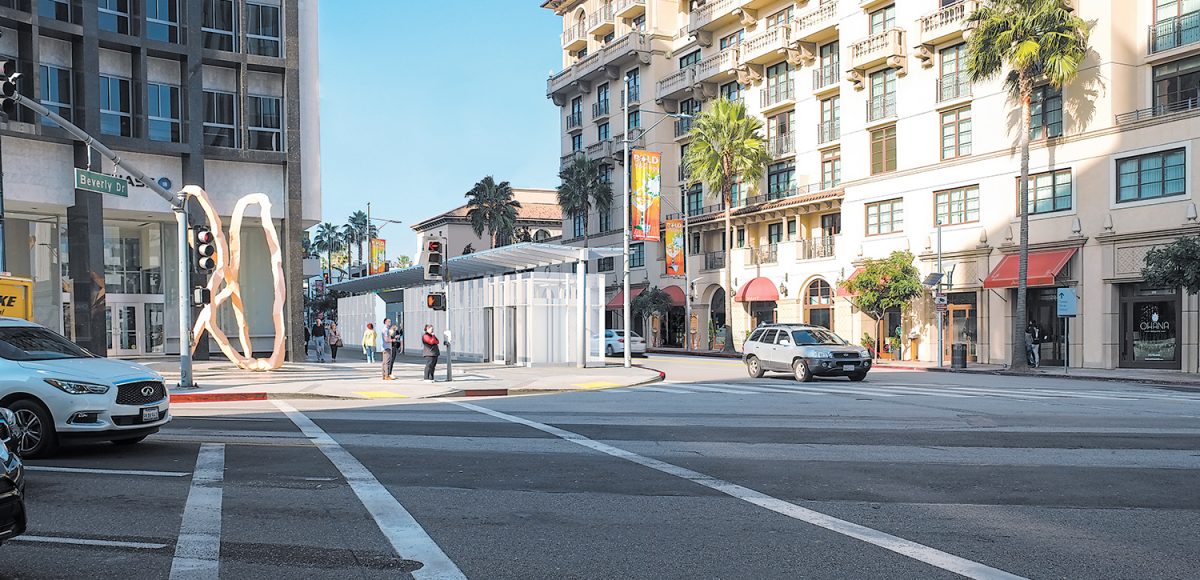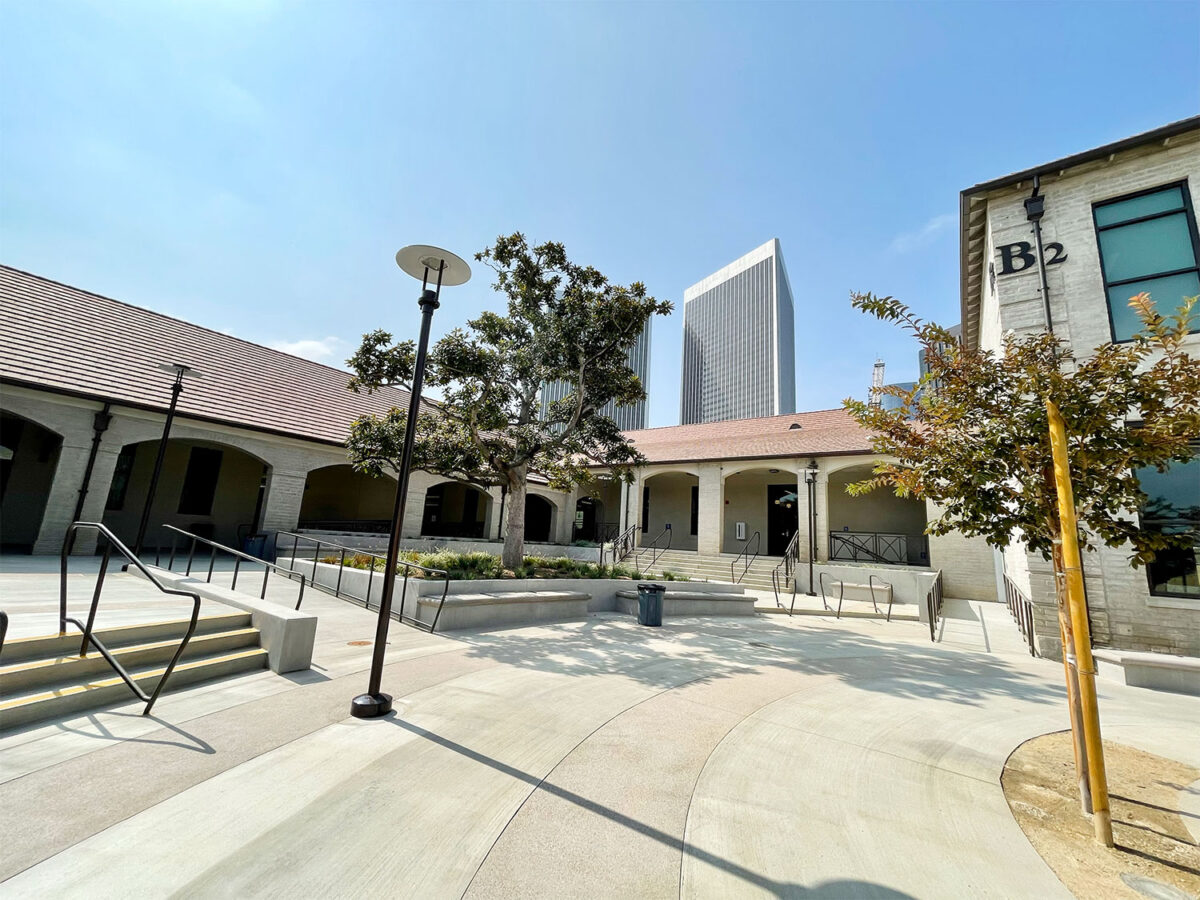The Beverly Hills City Council approved the Final Environmental Impact Report (EIR) for the Wilshire Boulevard/Rodeo Drive portal for the Metro Westside Purple Line Extension. After considering two alternatives, the Council selected Beverly Drive as the location for the subway exit and entrance–though no Councilmember expressed much enthusiasm at the choice put before them. The report was finalized unanimously, with each city councilmember in support of the Beverly Drive
location .
“I’m kind of disappointed,” said Councilmember Julian Gold, “because I really did think that, when we started talking about portals and things like that, we were really talking about the ability to provide amenities and service for the ridership, and in particular for our residents and our businesses. It would be nice to have a portal that would include a place to get a cup of coffee, or if you still read a newspaper, or some amenity that’s more than just having a hole in the ground with an escalator.”
Nonetheless, given the costs and logistics of the alternatives, Gold supported the Beverly Drive location. “Amongst the alternatives presented, I would vote for the Beverly Drive one,” he said.
For decades, Los Angeles officials and public transportation advocates have eyed the possibility of a heavy rail line from downtown to the Westside. Those ambitions manifested with the Purple Line Extension. In 2010, the Federal Transit Administration (FTA) and the Los Angeles County Metropolitan Transportation Authority (Metro) began the process of bringing the Purple Line from its current terminus at Wilshire Boulevard and Western Avenue to a new station in Westwood.
The original plans for the extension included two stations in Beverly Hills on Wilshire/La Cienega and Wilshire/Rodeo. The Wilshire/Rodeo station, however, had only one portal at the southwest corner of Wilshire Blvd. and Reeves Drive. This would have forced riders to cross Wilshire to access the Business Triangle. This provoked concern from both Beverly Hills residents and officials.
One of the most outspoken residents, Phil Savenick, called in to the Nov. 10 meeting.
“I feel somewhat responsible for us being here, because it was three years ago that I stood on the corner of Reeves and Wilshire as the cars whizzed by and basically said, how are visitors going to get from this side of the street to that? There is no stoplight, there is no crosswalk, there is no parking, there is no off-street loading and no security or bathrooms,” Savenick said.
In the interest of pedestrian safety and convenience, the City of Beverly Hills approached Metro in 2018 to provide a second portal on the north side of Wilshire Boulevard. The Wilshire/Rodeo Station North Portal also has the benefit of connecting riders more directly to the commercially vibrant Business Triangle.
“I looked at the four objectives that we put in place to determine the North Portal, which were either to have direct pedestrian access to jobs, retail amenities in the business district, improve pedestrian flow and avoid significant degradation of the vehicle flow and minimum street closings on Wilshire,” said Councilmember Lili Bosse. “I completely agree with the staff’s recommendation for Beverly Drive.”
Most of the Council members voiced disappointment with the plan to construct only one portal, pointing to subway systems in other cities that have multiple entrances and exits for each station.
“I can’t believe that Metro chose to only have one entrance-exit at each location, but at this point, that’s water under the bridge,” said Mayor Lester Friedman. He speculated that the choice was motivated by “a financial concern.”
The City first released a Draft EIR on Aug. 21, giving the public the chance to review the proposed portal location at Beverly Drive and two alternatives. Along with the Beverly Drive location, the EIR analyzed the possibility of a portal at Canon Drive and the Canon Drive staging yard, which Metro currently uses for storing equipment and machinery for construction of the Wilshire/Rodeo station. All three options would include two elevators, one stairway, and one “up” escalator, all enclosed within a translucent glass exterior. The Canon staging yard location has the possibility to add a second escalator by expanding into an adjacent parcel, although that would necessitate acquiring more land by the City.
The Final EIR includes comments received over the public comment period, in addition to staff responses. The City received a total of 153 comments on the Draft EIR during that period, only 38 of which related to the report’s environmental analysis. The majority of the comments expressed a location preference or made other unrelated comments.
While the EIR did not anticipate a significant impact on traffic, Vice Mayor Wunderlich expressed skepticism at that conclusion, raising concerns over street congestion by ride sharing services.
“I’m skeptical that there is not going to be more significant traffic impact than the results of the study would suggest when you consider the number of people who might choose to be dropped off or picked up by car at any of these locations,” he said.
The construction itself is expected to take over two years, with the station scheduled to open in 2025.







